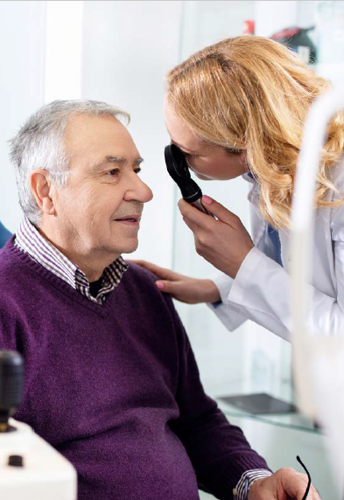Cataract
Capsular Tension Rings and Toric IOLs
CTR may not affect rotation, but may increase tilt and decentration.

Howard Larkin
Published: Thursday, March 2, 2023
“ We see a negative impact on decentration and tilt when using a capsular tension ring with an 11.00-mm plate haptic IOL. “
Capsular tension rings (CTR) are designed to increase the stability of intraocular lenses in the capsular bag, particularly in eyes with weak or damaged zonules. However, a study of rotation, tilt, and decentration of a plate haptic IOL found no overall difference in rotation between lenses implanted with or without a CTR, while tilt and decentration were actually higher in the CTR group.
Daniel Schartmüller MD and colleagues conducted a prospective randomised study involving 130 eyes of 65 patients. Each patient randomly received an 11.00-mm Zeiss 409M plate haptic IOL and an Ophtec CTR 276 13/11 in one eye, and the lens only in the fellow eye. All patients were in treatment for bilateral, age-related cataract and had no other relevant ocular disease.
Regarding rotation, no lens in the CTR group rotated more than 5 degrees in the first hour after surgery, while four non-CTR lenses did, with one rotating nearly 24 degrees. Mean rotation was 1.3 degrees in the CTR group and 2.1 degrees in the non-CTR group, though the difference was not statistically significant. Mean rotation was also similar between the two groups at one week, one month, and six months after surgery, though there were more outliers in the non-CTR group at one month.
“There was no difference in mean absolute rotation, but there was a significantly lower proportion of outliers in the CTR group,” Dr Schartmüller said. “There was no correlation between absolute overall rotation and lens thickness, axial length, and lens equatorial diameter. A decrease in rotation in the CTR group was observed within the first postoperative hour.”
Fibrosis increases tilt and decentration
Lens decentration and tilt were secondary results, he added. Both were measured in absolute terms and compared with measurements of tilt and decentration of the crystalline lens before surgery.
Six months after surgery, mean absolute decentration in the CTR group was 0.28 mm and in the non-CTR group 0.24 mm, which was not statistically significant. However, compared with preoperative measurements, the CTR group was significantly more decentred at a mean of 0.29 mm compared to 0.18 mm in the non-CTR group. The decentration increased at one month and six months after surgery as capsular shrinkage set in, Dr Schartmüller said.
Mean tilt in the CTR group was 6.66 degrees compared with 5.55 degrees in the non-CTR group six months after surgery, a statistically significant finding the group found. Tilt increased more in the CTR group as the capsule shrunk. There were also more outliers in the CTR group, with lenses tilted up to 17.7 degrees in the same period.
“We see a negative impact on decentration and tilt when using a capsular tension ring with an 11.00-mm plate haptic IOL,” he concluded.
Dr Schartmüller was awarded first prize in the cataract category for this poster at the 2016 ESCRS Congress in Copenhagen and presented as the “best of the best” at the 40th Congress of the ESCRS in Milan.
Daniel Schartmüller MD is an ophthalmologist and researcher at Medical University of Vienna, Austria. daniel.schartmueller@meduniwien.ac.at

Latest Articles
Nutrition and the Eye: A Recipe for Success
A look at the evidence for tasty ways of lowering risks and improving ocular health.
New Award to Encourage Research into Sustainable Practices
Sharing a Vision for the Future
ESCRS leaders update Trieste conference on ESCRS initiatives.
Extending Depth of Satisfaction
The ESCRS Eye Journal Club discuss a new study reviewing the causes and management of dissatisfaction after implantation of an EDOF IOL.
Conventional Versus Laser-Assisted Cataract Surgery
Evidence favours conventional technique in most cases.
AI Scribing and Telephone Management
Automating note-taking and call centres could boost practice efficiency.
AI Analysis and the Cornea
A combination of better imaging and AI deep learning could significantly improve corneal imaging and diagnosis.
Cooking a Feast for the Eyes
A cookbook to promote ocular health through thoughtful and traditional cuisine.
Need to Know: Spherical Aberration
Part three of this series examines spherical aberration and its influence on higher-order aberrations.
Generating AI’s Potential
How generative AI impacts medicine, society, and the environment.